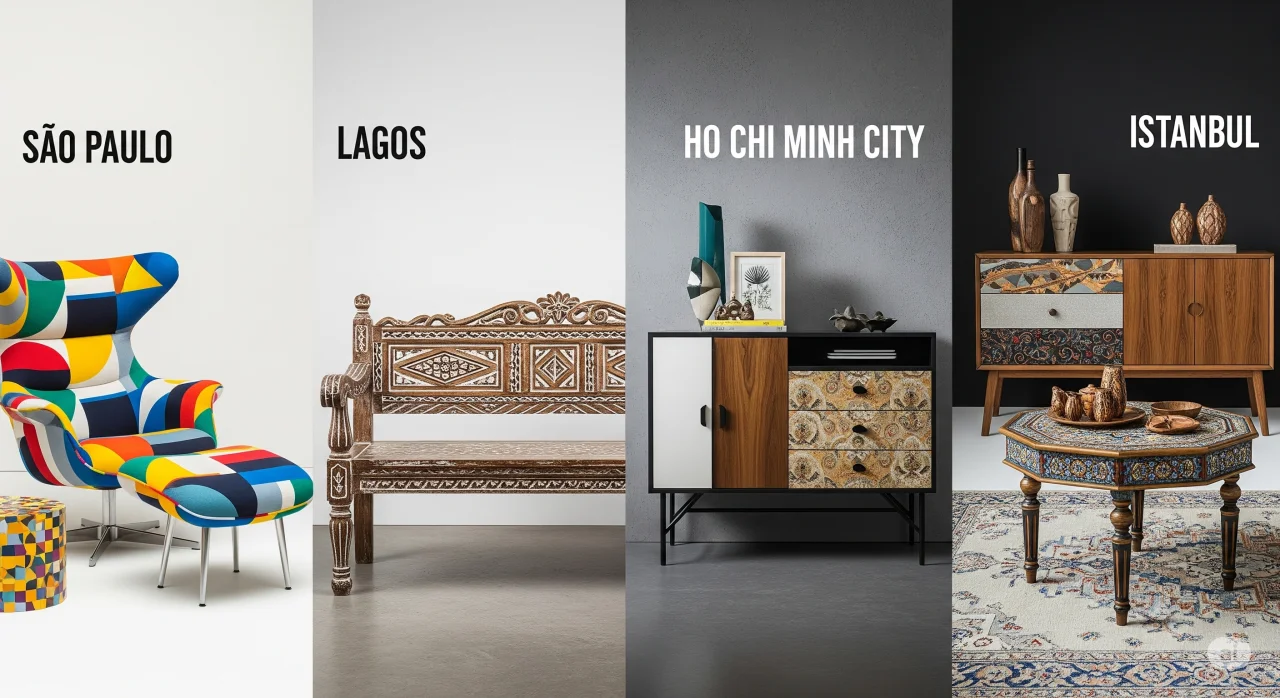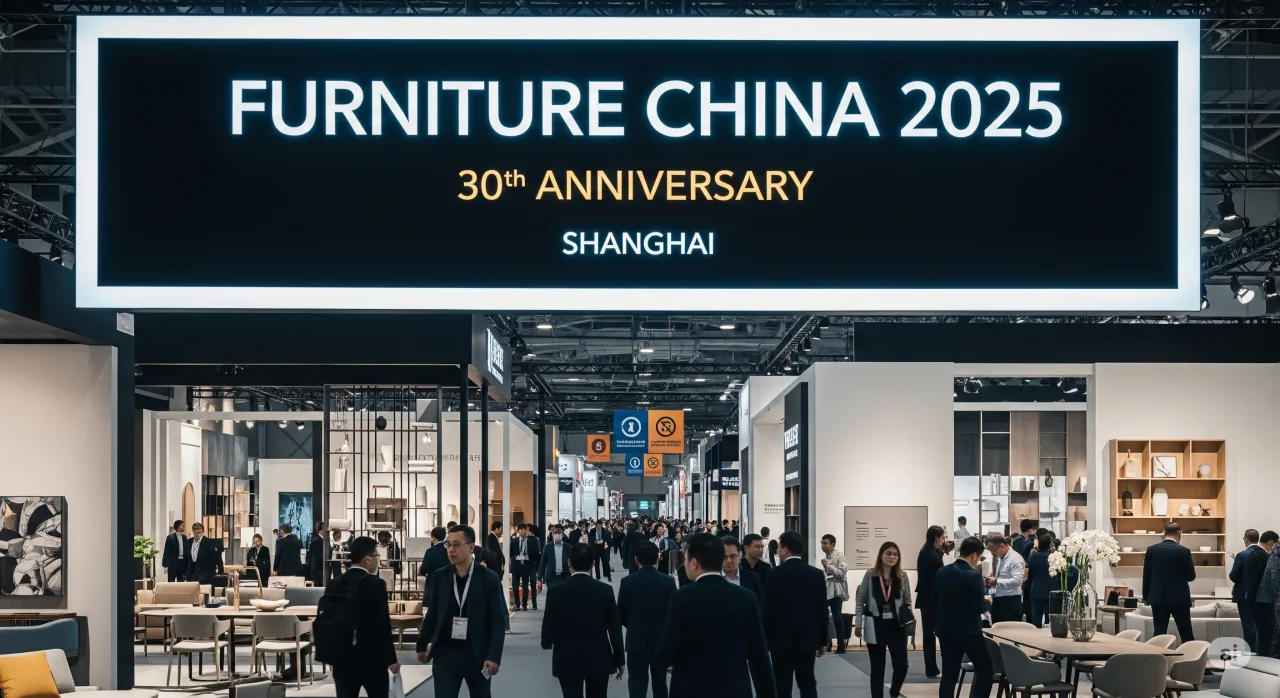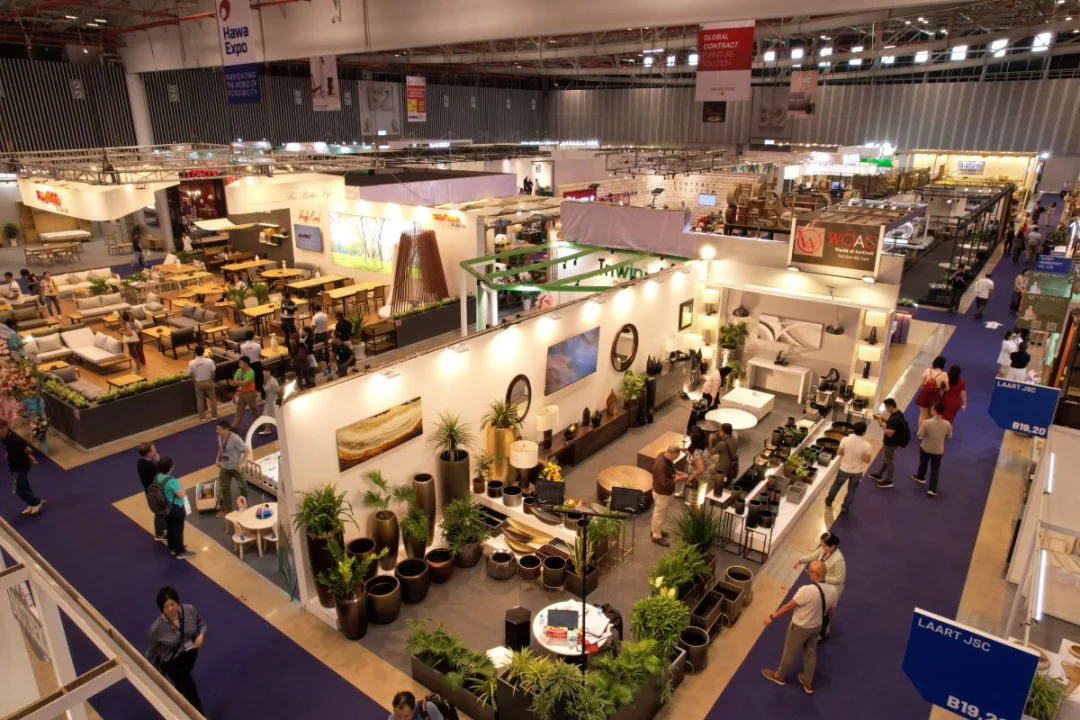For decades, cities like Milan, Paris, and Copenhagen have dominated the global design conversation. These urban centers remain influential, but a new generation of cities is beginning to reshape the future of furniture and interior design. Driven by local creativity, growing economies, and a renewed focus on sustainability and identity, these rising hubs are attracting global attention.
From Latin America to West Africa and Southeast Asia, cities such as São Paulo, Lagos, Ho Chi Minh City, and Istanbul are emerging as centers of innovation, craftsmanship, and cultural storytelling in furniture design. Their influence is steadily expanding, challenging traditional design geographies and creating new opportunities for collaboration and market growth.
1. São Paulo, Brazil
Why it matters:
São Paulo has long been a cultural and economic powerhouse in Latin America. Now, it is becoming a hub for sustainable furniture production, digital design integration, and experimental materials.
Key features:
- Strong emphasis on reclaimed wood, natural fibers, and recycled materials.
- A new generation of Brazilian designers (such as Fernando and Humberto Campana, Carol Gay) blending native motifs with global minimalism.
- Annual events like DW! São Paulo Design Week attracting international attention.
- Opportunity:
Brands looking to expand into Latin American markets are collaborating with local workshops and artisan networks in São Paulo to co-create regionally authentic yet globally competitive collections.
2. Lagos, Nigeria
Why it matters:
Lagos is Africa’s most dynamic cultural capital. Its design scene is characterized by bold colors, multifunctional aesthetics, and strong ties to heritage.
Key features:
- Growth of pan-African design studios like Studio-Lani and Nmbello Studio.
- Emphasis on local materials such as raffia, clay, and iroko wood.
- Integration of traditional Yoruba craftsmanship into contemporary forms.
Opportunity:
Lagos offers fresh narratives and a rapidly growing design consumer base. Global brands are beginning to seek partnerships with African designers who bring authentic cultural perspectives and untapped material sources.
3. Ho Chi Minh City, Vietnam
Why it matters:
Vietnam’s manufacturing capabilities are widely known, but its creative design voice is now becoming more globally recognized. Ho Chi Minh City is leading the way with a new wave of studios and makers.
Key features:
- Sustainable rattan, bamboo, and lacquer used in modern forms.
- Aesthetic fusion of Asian simplicity with French colonial heritage.
- Local startups blending industrial capability with digital design innovation.
Opportunity:
Ho Chi Minh City presents a unique intersection of skilled craftsmanship, scalable production, and contemporary Asian style. It is ideal for global designers seeking high-quality, ethically produced furniture.
4. Istanbul, Turkey
Why it matters:
At the crossroads of Europe and Asia, Istanbul is reconnecting its design identity with its historical craft legacy. It is also positioning itself as a strategic center for East–West collaboration in furniture design.
Key features:
- Strong artisanal traditions in woodworking, textiles, and ceramics.
- Emerging independent studios such as Autoban and Sanayi313 pushing modern aesthetics.
- Events like Istanbul Design Biennial bringing global creatives together.
Opportunity:
With a well-established furniture industry and rising creative talent, Istanbul offers global brands access to high-quality production and a design language that balances history with innovation.
Summary Table: Key Emerging Cities in Furniture Design
| City | Region | Strengths |
|---|---|---|
| São Paulo | South America | Sustainability, craft innovation, native materials |
| Lagos | Africa | Cultural storytelling, bold design, artisan networks |
| Ho Chi Minh City | Southeast Asia | Ethical production, hybrid aesthetics, local-global fusion |
| Istanbul | Eurasia | East–West design identity, manufacturing expertise |
The global design landscape is diversifying. While Milan and Paris will always be iconic, the future of furniture is also being written in cities like São Paulo, Lagos, Ho Chi Minh City, and Istanbul. These cities are not just following global trends—they are shaping them, with fresh materials, bold identities, and new ideas about how we live and furnish our spaces.
As international trade and cultural exchange grow more fluid, furniture fairs, media platforms, and manufacturers must recognize and engage with this global shift. The next design capital might not be where tradition tells us to look—but where innovation is already happening.








